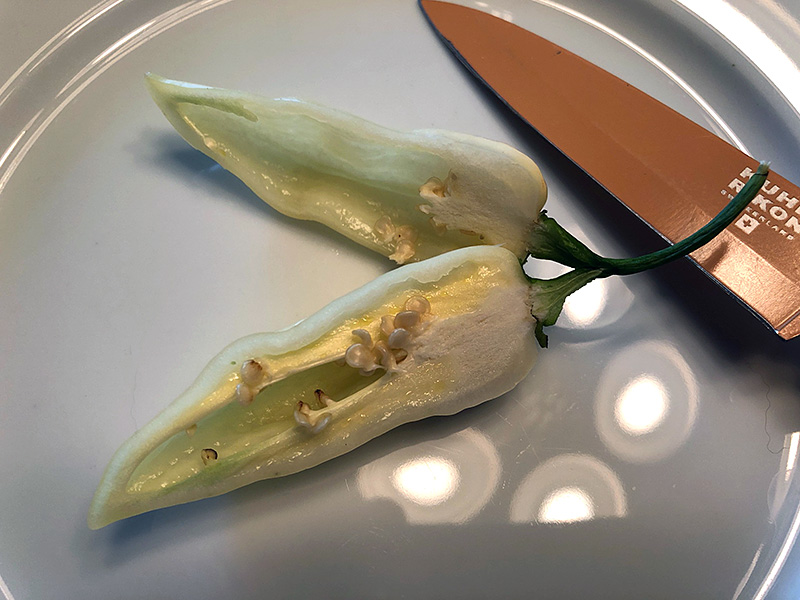White Bhut Jolokia Pepper Review
The Bhut Jolokia (aka, Ghost Pepper) has been a fan favorite of mine for a while now. I’ve grown your standard red variety, peach, hybrid crosses and now the lovely White Bhut Jolokia. While this is supposed to be a natural color variant of the pepper, there are differences in overall size and appearance that make me believe it’s not 100% “natural.”
Let’s start with the most obvious aspect of these tasty little fruit – their appearance. In my experience, the standard red Bhut Jolokia is typically a larger pepper, growing upwards of three inches in length (sometimes more) and, depending on the individual strain, can have folds, wrinkles and blisters. This particular White Bhut Jolokia plant’s fruit averages roughly 1.5 inches in length, is bullet shaped and smooth skinned.

Once the fruit are cut open, the differences continue. The off-white, yellow tinged interior sports a small cluster of placenta and seeds at the stem-end of the pod. The red Bhuts that I have eaten in the past usually have the placenta running the full length, from stem to tip. It’s not until we get to the aroma where similarities start to creep in.
These little fruit are fragrant with a lightly fruity and softly floral trait that is no unlike your run-of-the-mill Ghost pepper. The smallish white bullets smell very much like their bigger, red cousins.

The aroma of the White Bhut Jolokia signals that there is some heat ahead once you get into actually chomping on it, but it’s actually not at fiery as expected. I’m not sure if it’s my particular plant or if the light-to-moderate heat is typical of the variety, but the pods that I have eaten thus far this season haven’t reached that of the red version. Sure, it’s got a punch, encompassing the entire tongue and slowly sliding down the back or the throat – it’s quite a pleasant burn that lasts a good long while.
I know my tolerance for capsaicin heat is not on par with some of you pepper heads out there. So, when I see this particular fruit listed at 1 million SHU, I either have to be skeptical of that number or assume my plant isn’t quite up to par with expectations. Regardless, this isn’t a bad tasting pepper. I’ve already made a simple, vinegar-based sauce with it that I have enjoyed a number of times over chicken (in taco form and other treatments).
It’s a unique plant that I will probably grow again in the future, if only for the color variation amongst my harvests.